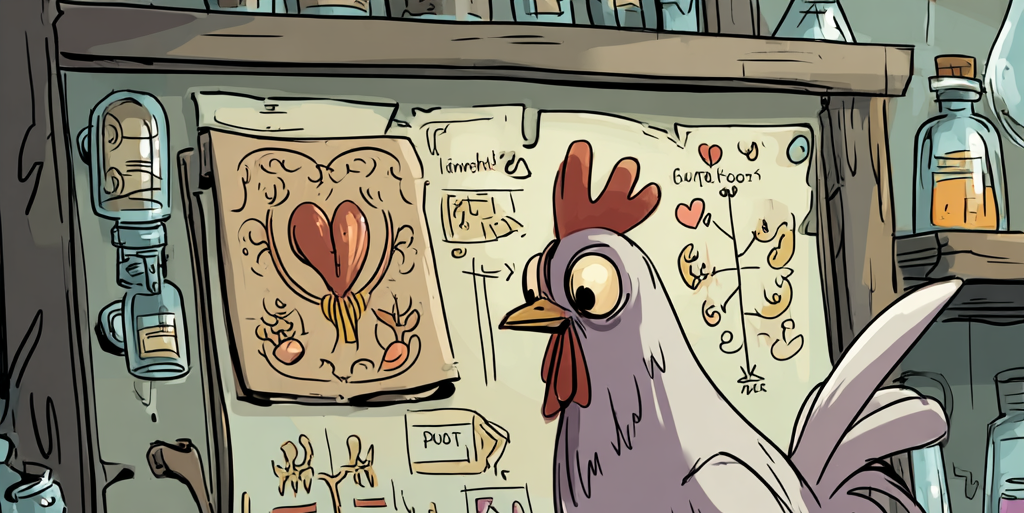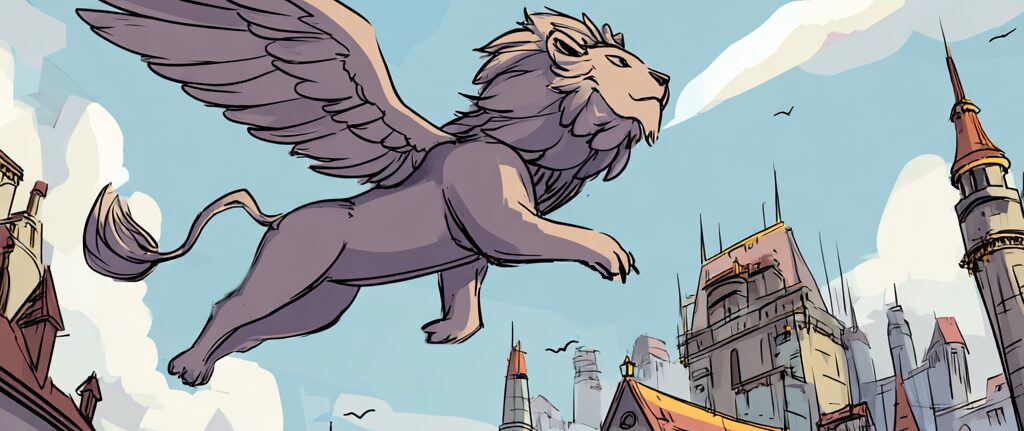The Economy of the Copper Dragon
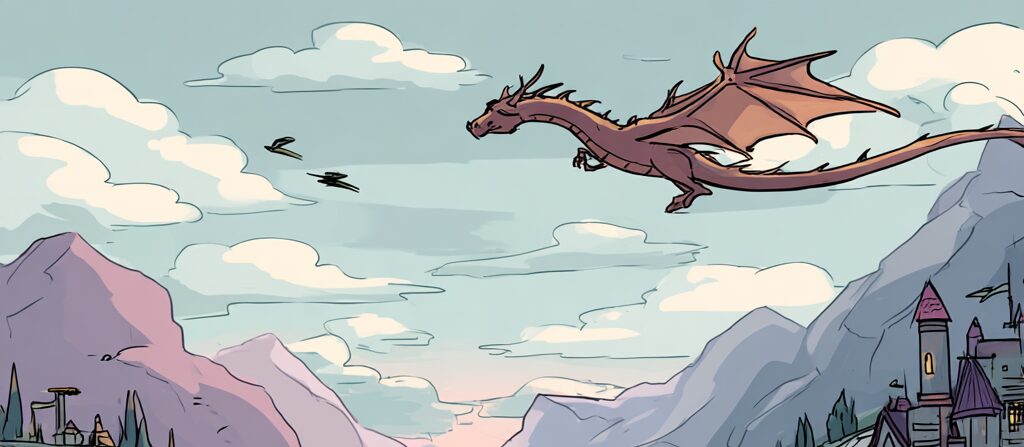
When Your Best Investment is a Good Laugh
Nothing says “economic development” quite like a giggling wyrm with a portfolio
A Most Unusual Business Meeting
“You’re telling me,” wheezed the merchant as he counted his coins for the third time, “that in six months, this backwater mining town has become the most prosperous settlement in three kingdoms?”
The innkeeper—a cheerful fellow with an odd twinkle in his eyes—chuckled as he polished a mug with suspicious efficiency. “Oh, much more than that, friend! We’ve got trade schools, cultural festivals, and more business opportunities than you can shake a pickaxe at. Though I do recommend being careful about the pickaxe-shaking—our miners take that sort of thing personally. Hahaha!”
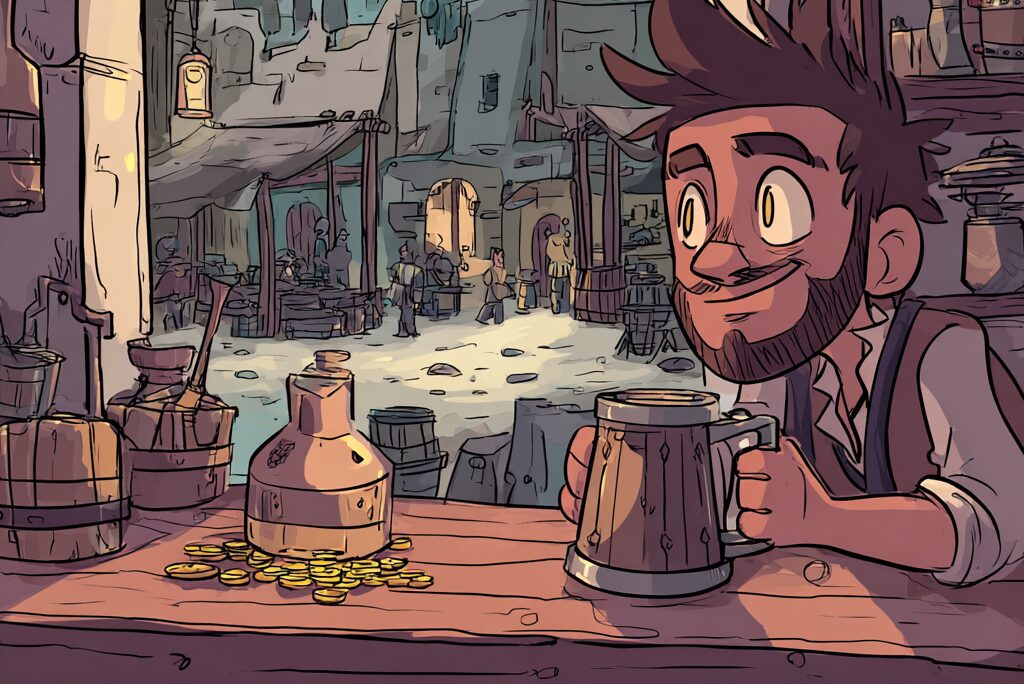
The merchant wasn’t laughing. He’d traveled here expecting to find the usual frontier squalor. Instead, Millhaven sprawled across the hillside like someone had taken a fever dream of success and built it: gleaming workshops, a bustling market, and—most unsettling to his mercantile sensibilities—a refugee camp outside the walls where desperate families from across the realm begged for entry to this “miracle town.”
“But how?” pressed the merchant, his voice carrying that particular tone merchants use when someone is getting rich without them. “What’s your secret? Magic? A discovered vein of precious metals? Divine intervention?”
The innkeeper’s grin widened. “Oh, you might say we have a very special patron. Someone with a… let’s call it a ‘philosophy’, focused on long-term building rather than short-term extraction.” His eyes practically sparkled with mischief. “Quite the character, really—always telling jokes, loves a good riddle. The sort who believes that the best returns come from making everyone prosperous together.”
“And this patron just… gives away money?” The merchant’s voice carried the horrified tone of someone witnessing a fundamental violation of natural law.
“Gives away? My dear fellow, this isn’t charity—it’s a sophisticated development program!” The innkeeper leaned closer conspiratorially, his voice dropping to a theatrical whisper. “Though I will say, our patron does get rather cross when people don’t appreciate a good joke. Had one fellow last month who kept interrupting his riddles with complaints about ‘proper business practices.’ Poor soul ended up spending three days convinced he was a chicken.”
“In his defense,” the innkeeper reflected aloud, “He did lay some very fine eggs. And the transformation reversed itself. Eventually.”
The merchant shifted uncomfortably. “So where is this mysterious patron now?”
“Oh, closer than you might think!” The innkeeper’s laugh had a distinctly low rumble to it. “Always watching, always listening… Why, I’d wager they’re listening to this very conversation!”
The Art of Draconic Investment: Why Copper Dragons Make Good Community Developers
Humans have such amusing misconceptions about dragon economics, I mused while the merchant fumbled with his coin purse.
You see, copper dragons represent the most sophisticated form of draconic economics—we don’t just accumulate wealth, we create it through what your modern economists might call “social investment” and what I prefer to call “making sure everyone has enough to eat and enough reasons to laugh.” Unlike our chromatic cousins who extract wealth through rather pedestrian methods, we invest in peoples, relationships, and the long-term prosperity that comes from treating communities like beloved friends rather than exploitable resources.
And the profits! Oh, the magnificent, sustainable long-term profits!
Phase One: The Enthusiastic Seeding Period (Months 1-12)
Picture, if you will, a young copper dragon discovering the absolute joy of investing for the first time.
We begin by identifying struggling communities with untapped potential—the economic equivalent of finding a beautiful gem buried in ordinary stone. We prefer settlements that already possess strong social bonds: mining towns where families have worked together for generations, farming villages with deep cooperative traditions, or artisan communities built around shared crafts and the occasional shared complaint about the local weather.
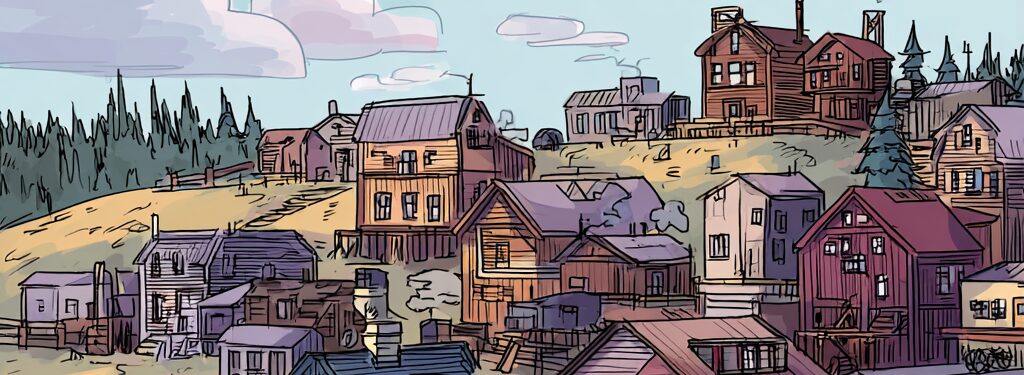
Our initial investments will appear almost supernatural in their precision, though I prefer to think of them as “strategic – with comedic timing.” A struggling blacksmith receives exactly enough funding to modernize their forge. A failing inn discovers inexplicably comfortable common room furniture left behind by a merchant who needed to leave travelling swiftly and lightly. Local children finding new schools that teach both practical skills and creative arts, staffed by teachers who somehow understand exactly how each child learns best and possess an unusual fondness for riddles.
Communities can expect growth, but more importantly they develop economic resilience. Unlike the boom-bust cycles common in resource extraction (which, frankly, lack both sustainability and proper comedic structure), this growth builds on existing strengths while creating new opportunities that complement rather than replace traditional ways.
Phase Two: The Network Building (Years 1-3)
This is where things get truly interesting.
Once individual communities achieve stability, we begin connecting them into mutually beneficial trade networks. Sustainable prosperity requires multiple communities supporting each other rather than competing in the destructive manner favored by most humanoid kingdoms. Free trade and relationships are critical.
We facilitate these connections through carefully orchestrated “coincidences” that would make any theatrical director weep with envy: merchants from one town “just happen” to run into artisans from another at perfectly timed festivals; trade routes develop naturally as communities discover each other’s specialties; cultural exchanges spread innovations while preserving local traditions. Most crucially, local humor. Always lead with humor.
Network effects create economic stability that no single community could achieve alone—its like a joke that gets funnier every time someone tells it to a new audience.
Unlike typical medieval economics based on resource extraction and zero-sum competition (which, yes, is as exhausting and unnecessarily grim as it sounds), copper dragon networks operate on principles of mutual benefit.
Phase Three: The Prosperity Problem (Or, How Success Creates Its Own Punchlines)
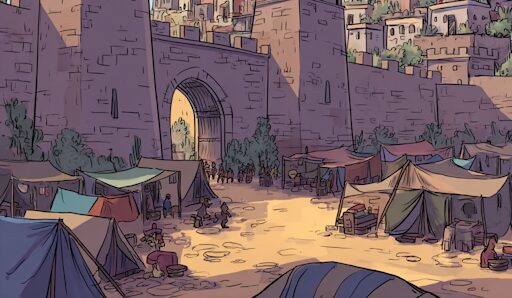
Here’s where things get complicated, but still interesting.
Strong economic growth creates its own challenges. Rapid prosperity attracts attention—both welcome and unwelcome. Skilled immigrants flock to opportunities, which can create housing shortages and cultural tensions. Neighboring regions will seek to join the trade network or view it as an unfair threat to their own cultures and economies. To compete, some neighbors may oppose the community through economic and cultural warfare, or even military threats—none of which are particularly fun. This is where we really start to outsource to adventurers. After all, someone needs to deal with the polluted waters, the thieves guild preying on the community, and the occasional border conflict. And thats what adventurers are best at, right?
Building Campaigns Around a Copper Dragon Patron: A DM’s Guide
Now, for those brave souls who wish to inflict—I mean, share—these experiences with their adventuring parties…
The unique nature of copper dragons can create a fun campaign arc that evolves as both dragon and communities mature. Each age stage presents different types of challenges, opportunities, adventure, and well-timed comedy.
Wyrmling Stage: The Eager Investor (Levels 1-6)
Theme: Small-scale community building with immediate, visible impacts (and frequent mishaps, usually magical in nature)
Picture an enthusiastic young dragon who has just discovered the joy of investment and community building – and possesses roughly the same level of restraint as a sugar-addled gnome in a fireworks shop.
A copper dragon wyrmling has enthusiasm that often exceeds their planning abilities, creating adventures focused on solving the unintended consequences of good intentions. Think of it as “community development meets slapstick comedy with occasional property damage.”
Adventure Seeds:
- The Overambitious Workshop: The wyrmling funds a magnificent artificer’s shop, but the magical experiments are now threatening the village
- The Abandoned Mine Revival: Reopening an old mining operations has awakened something that was definitely better left sleeping and has strong opinions about noise complaints
- The Festival Disaster: The dragon’s elaborate community celebration has attracted unwanted attention from bandits, rival communities, and at least one very confused owlbear
Young Adult Stage: The Network Builder (Levels 5-10)
Theme: Regional politics and interconnected communities
By this stage, the dragon has learned from early mistakes and now works to connect communities into mutually beneficial networks, though the learning process involves some spectacular miscalculations.
The dragon has developed some wisdom to match their enthusiasm, focusing adventures on managing complex relationships between different settlements while defending against external threats and the occasional internal dispute over trade routes.
Adventure Seeds:
- The Trade Route Fortress: Establish and defend a strategic waystation connecting two dragon-sponsored communities
- The Neutral Ground Academy: Create a shared institution where different communities can collaborate, learn, and engage in spirited debates about optimal cheese-aging techniques, despite farmers attempting to sabotaging the goods
- The Diplomatic Embassy: Navigate the politics of establishing the first formal diplomatic mission to a foreign land
Adult Stage: The Regional Power (Levels 8-14)
Theme: International diplomacy, sustainable development, and sophisticated humor
The dragon’s network has become a significant regional power, attracting broad attention and creating political situations complex enough to make even experienced diplomats reach for strong drink.
Adventure Seeds:
- The International Conference: Navigate complex negotiations in a neutral city where multiple kingdoms debate and wrangle for the future, and judge the corresponding annual pie contest!
- The Trade War: Respond to coordinated economic attacks designed to undermine prosperity through tariffs, sanctions, and stupidly passive-aggressive trade negotiations
- The Succession Crisis: Manage political upheaval when a neighboring kingdom’s ruler dies and various claimants seek network support (usually in exchange for questionable promises)
Ancient Stage: The Elder States (Levels 12-20)
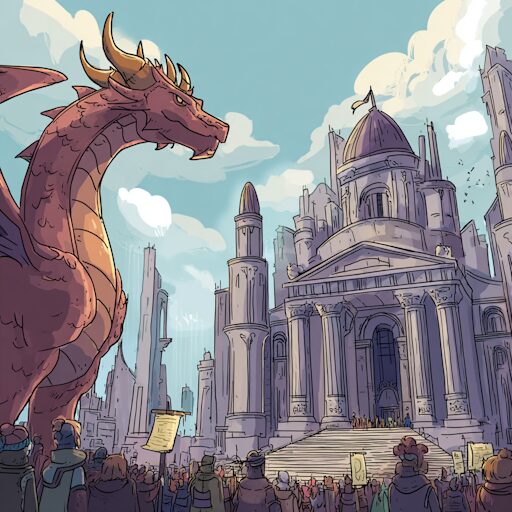
Campaign Theme: Legacy building
The ancient copper dragon has created something greater than themselves—a civilization that must survive without their direct guidance, and which requires perhaps the most complex joke setup in history.
The ancient dragon faces the ultimate challenge: ensuring their life’s work can continue without them, while addressing threats that could destroy everything they’ve built.
Adventure Seeds:
- The Planar Embassy: Establish diplomatic relations with extraplanar entities whose involvement could secure or threaten the community’s future
- The Dragon’s Successor: Create institutions and train leaders who can maintain prosperity after the dragon’s eventual departure
- The Great Library: Build a repository of knowledge that preserves the wisdom and innovations of the entire community, despite threats from religious sects and rebel artificer arsonists
Adventures with Comedic Timing
Sharing some specific examples of the delightful chaos that follows copper dragon investment projects.
The Overambitious Workshop (Levels 1-3)
Situation: Millhaven’s new artificer workshop, funded by an enthusiastic young copper dragon, has become a magical powder keg of epic proportions. Master Artificer Glintzy Cogsprocket’s experiments with “efficiency enhancement” have created unstable magical constructs that threaten not just the village, but possibly the fundamental laws of physics.
I may have been slightly overenthusiastic in my support of Glintz’s “revolutionary improvements to traditional crafting methods.” In my defense, his initial proposals seemed quite reasonable, and his enthusiasm was infectious. Unfortunately, so were his magical experiments.
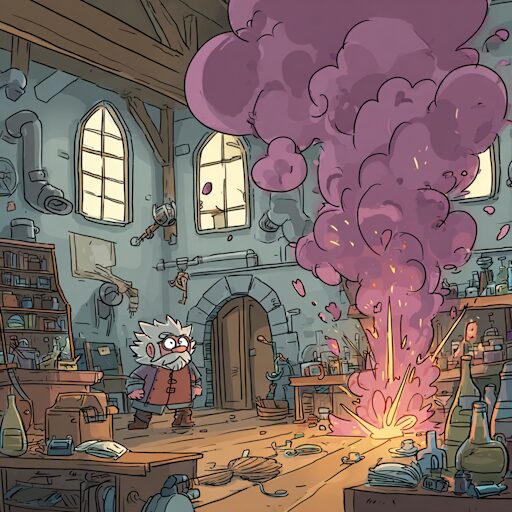
Hook: The characters arrive in Millhaven as magical explosions rock the workshop district with the rhythmic persistence of a very destructive metronome. Panicked villagers flee past them carrying smoking belongings, while a merchant figure argues frantically with a soot-covered gnome outside a building wreathed in purple smoke and what appears to be sentient steam.
Encounters:
Meeting the Dragon: The copper dragon wyrmling (disguised as “Merchant Pete,” a helpful fellow with surprisingly extensive knowledge of local investment opportunities) desperately needs the characters’ help. He funded Glintzy’s workshop to bring prosperity to Millhaven, but the artificer’s enthusiasm exceeded his wisdom by approximately the same margin that a tornado exceeds a gentle breeze. Pete offers the characters 200 gp each to help contain the magical disasters before they spread to the rest of the village, and possibly the neighboring kingdoms.
“I know what you’re thinking,” Pete says, wringing his hands with theatrical distress, “‘How could such a obviously wise and foresighted patron allow this to happen?’ Well, let me tell you, Glintz’s initial proposals seemed perfectly reasonable! Who could have predicted that adding ‘efficiency runes’ to everything would result in… well, this?”
The Workshop Chaos: Use a modified version of the Manor map from Appendix B in the Dungeon Master’s Guide, representing a two-story workshop. Roll on the encounter table below for a random encounter or place each in an interesting looking room:
| 1d6 | Encounter | Pete’s Commentary |
| 1-2 | 2 Animated Brooms gone berserk (sweeping everything into the fireplace) | “Glintzy thought they needed more initiative. He was… technically correct.” |
| 3-4 | 1 Homunculus and 3 Animated Objects (tools) fighting each other | “They’re having a disagreement about proper workshop organization. It’s gotten quite heated.” |
| 5 | Magical explosion (DC 13 Dex save or take 2d6 force damage) | “Ah, the efficiency runes are ‘optimizing’ again. Perfectly normal!” |
| 6 | Glintzy’s failed experiment: 1 Golem made of workshop materials (use the Flesh Golem stat block, but with half the standard hit points and only 1 slam per attack action) | “That one’s particularly tragic. It used to be a very nice workbench.” |
Master Glintzy’s Laboratory: In the workshop’s upper level, Glintzy Cogsprocket (use Mage statistics, but replace spells with artificer-themed alternative decriptions) is trying to contain his greatest mistake: an Apparatus of Kwalish that he “improved” with unpredictable magical enhancements (use the Giant Crocodile stat block, with bite and tail attacks representing the pincers and legs of the apparatus)
“The beauty of the design,” Glintzy explains while dodging a grasping mechanical arm, “is that it’s so efficient, it operates even when we don’t want it to! That’s innovation!”
Player Objectives:
- Combat Obsessed Players: Face off against rogue constructs and the magnificently unpredictable apparatus in increasingly creative ways
- Exploration Obsessed Players: Navigate the chaotic workshop, if they find Glintz’s scattered notes they can glean what went wrong and how to fix it with appropriate Arcana (DC 15) or crafting (DC 17) checks
- Socially Obsessed Players: Convince Glintzy to accept help (challenging his professional pride) and join the fight against his rogue monstorsity, negotiate with “Copper Pete” about future safety protocols, and calm panicked villagers
Resolution: If the characters help stabilize the workshop and convince Glintzy to accept reasonable safety protocols, Tinkerholm gains a properly functioning artificer’s workshop that will provide minor magical services without threatening the locals. Copper Pete might reveal his true nature to the party and become a recurring patron, having learned the invaluable lesson that enthusiasm must be tempered with oversight—preferably the kind that prevents furniture from achieving sentience.
The Stoneheart Bridge (Levels 7-8)
Situation: Two dragon-sponsored communities, Millhaven and Riverside, need a bridge across the turbulent Stoneheart River to complete their trade network and stop the weekly “great ferry debates.” However, bridge construction has awakened an ancient guardian that views the project as a territorial violation roughly equivalent to building a dance hall in a monastery.
Building infrastructure seems straightforward until you encounter the sort of complications that make you nostalgic for simple problems like rogue magical furniture.
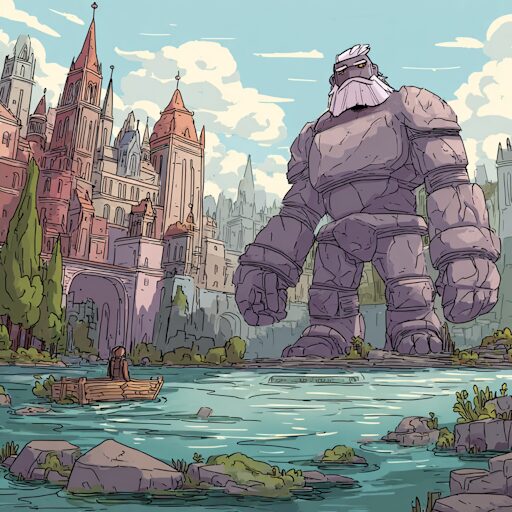
Hook: The characters are either hired by the communities or sent by their young adult copper dragon patron to oversee the bridge’s completion. They arrive to find work halted as a massive Stone Giant has emerged from the riverbed, claiming the waters as its ancestral domain.
Encounters:
Diplomatic Overture: The Stone Giant, Thorgrim Deepstone (who speaks in the low measured tones of someone accustomed to thinking in geological time), is not inherently hostile but believes the bridge violates ancient treaties between giants and river spirits that predate most human civilizations by several millennia. Characters can attempt to negotiate, requiring successful DC 15 Persuasion checks modified by their approach:
- Showing respect for giant traditions. A successful history check (DC 16) might glean information about the traditions granting advantage on subsequent charisma checks (“Proper manners never go out of style, even across species”)
- Offering tribute or compensation: +2 bonus (“Acknowledgment of value given and received”) – assuming the gift is something the giant would appreciate, like an interesting crystalline formation or stone tablet reading material (a good waterproof romance novel in Giantish might also suffice)
“You small folk build quickly and think in moments,” Thorgrim rumbles, his voice like distant thunder, “but these waters have been sacred since your ancestors were learning to make fire.
The Engineering Challenge: Whether through negotiation or the more traditional approach of applying force until problems go away, the characters must solve the technical challenge of building a bridge that respects the ancient giant’s principles. This requires:
- Exploration: Survey the riverbed and discover ancient giant-carved channels that reveal the river’s true sacred geography (DC 18 Investigation)
- Social: Coordinate between Millhaven’s stoneworkers and Riverside’s engineers, two groups with very different approaches to “proper” construction techniques (DC 15 Persuasion)
- Combat: Deal with River Trolls who emerge when construction disturbs their lair and who have strong opinions about noise pollution (DC whatever, roll for inititative)
Character Objectives:
- Combat Obsessed Players: Fight river monsters and potentially face the Stone Giant if negotiations fail spectacularly
- Exploration Obsessed Players: Survey challenging terrain, discover ancient giant artifacts, and solve engineering puzzles that combine magic with practical construction
- Social Obsessed Players: Mediate between communities with different building philosophies, negotiate with an ancient giant, and coordinate complex construction efforts
Resolution: Success creates a bridge that becomes more than infrastructure—it’s a symbol of cooperation between communities and respect for ancient powers. The bridge provides significant economic benefits and becomes a pilgrimage site for those seeking to honor the old ways alongside the new, generating tourism revenue and at least three competing guidebooks (and a meager mention by Volo).
Higher Level Adventures
The Healing Waters: Rapid industrial growth has polluted the Silverflow River, transforming what was once crystal-clear water into something resembling soup. Multiple communities depend on this river for drinking water, farming, and fishing, and what started as minor contamination has become a magical plague affecting both water and those who depend on it. The characters are summoned by their patron to an emergency council where representatives from the affected communities argue bitterly and angrily while the dragon looks more worried than the characters have ever seen.
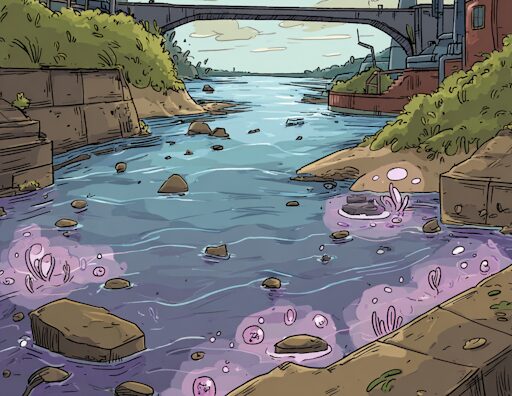
The Forgotten Pact: Deep beneath the river lies a bound Aboleth that has fed on the region’s magic for centuries, contained by ancient wards that the pollution has slowly weakened. It now seeks to infiltrate the community to regain its freedom and instill fear and conspiracy into the local population. Characters must navigate an underwater dungeon, face the creature’s dominated servants (including some from the player’s community) and choose between destroying the Aboleth or finding a way to restore its prison.
Internal Intrigue: A thieves guild attempts to turn communities against each other through planted evidence, false accusations, and really convincing rumors. Players need to Investigate the conspiracy behind the coordinated crisis and uncover rival factions’ hidden bases and secret plans.
Political Pressure: Border conflicts engineered by a distrustful neighbor force the community to choose between territory and cooperative principles. Players need to navigate extremely complex diplomatic situations, lead defenses against military threats, and face powerful champions sent by rival nations.
The Succession Codex: The dragon knows that its time of active leadership must end. To ensure the prosperity network survives independently, it needs the characters to establish the Succession Codex—a combination of an academy and library of knowledge, governmental framework, and cultural institution that can guide the community without his oversight.
The Dragon’s Withdrawal: The copper dragon deliberately removes itself from a crisis at the worst possible time, forcing the characters and new institutions to prove their independence in the most challenging possible circumstances. Success means the characters become the legendary figures whose names are remembered as founders of this new thriving realm (the dragon’s final joke – putting the adventurers in charge).
The Final Revelation
The merchant had long since departed, his head spinning with economic possibilities and cultural warnings in equal measure, leaving behind only a meager tip and a lingering scent of confusion.
“Well,” I said to the empty common room, “that went rather well, wouldn’t you say?”
My carefully maintained human disguise melted away like morning mist, revealing scales that caught the firelight like burnished metal, eyes that sparkled with ancient wisdom and perpetual mirth, and a grin full of my many many many perfectly straight and white teeth.
“I do so enjoy a good conversation about trade,” I chuckled, settling more comfortably into the suddenly much-larger common room, the walls expanding to accommodate my true size with the casual magic of someone who’s had centuries to perfect interior design. “Though I must say, that merchant had absolutely no appreciation for my pickaxe joke. Really, this younger generation has no sense of humor whatsoever.”
Parts and Components
Warning: Attempting to harvest materials from a living copper dragon will result in the dragon spending the next century playing increasingly elaborate pranks on you, your family, and your descendants unto the seventh generation. This is considered by dragon scholars to be “getting off lightly.”
Copper Dragon Scales
Harvesting: Copper dragons naturally shed scales during molting periods, typically once every 7-10 years in a process that involves considerable dramatic sighing and complaints about “feeling bloated.” These scales can be found near dragon lairs or may be gifted to particularly amusing companions who demonstrate proper appreciation for sophisticated humor.
Crafting Properties: Copper dragon scales can be used to craft items related to communication or scrying (such as a Crystal Ball, Doss Lute, Fachlucan Bandore, Ring of Animal Influence, Sending Stones or a Staff of Birdcalls). They are also often used for items that provide bonuses to Persuasion, Performance, and trade-related skill checks (such as a Rod of Rulership or Ion Stone of Leadership).
Processing Requirements: Scales must be worked while fresh (within 30 days of shedding) and require specialized techniques that preserve their magical resonance. Traditional metalworking destroys their community-building properties and results in disappointed dragons.
Dragon’s Laughter Essence
Harvesting: This ethereal substance can be captured during moments when the copper dragon experiences genuine joy—typically during successful community celebrations, perfectly delivered punchlines, or when hearing particularly clever jokes that demonstrate proper comedic timing.
Crafting Properties: Dragon’s laughter essence can be used in crafting items that grant immunity to despair and fear effects or provide bonuses to social interaction. Released raw it creates a contagious sense of optimism that spreads to nearby creatures like a beneficial magical plague.
Crafting Applications:
- Elixer of Health
- Philter of Love
- Potion of Heroism
- Potion of Comprehension
- Potion of Animal Friendship
Storage Requirements: Must be stored in vessels lined with precious metals from the dragon’s hoard, preferably accompanied by frequent of the jokes that inspired the original laughter. Warning: Improper storage could cause uncontrollable giggling at inappropriate moments.
